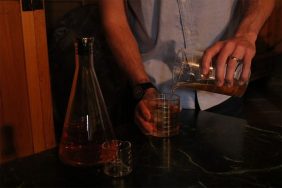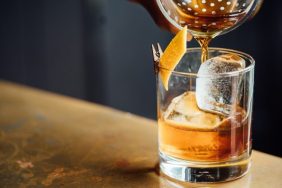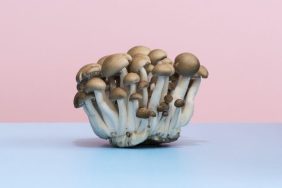Often called a bartender’s salt and pepper, bitters are a category of liquid seasonings made by infusing high-proof spirits with bittering agents like gentian and cinchona bark with botanicals, spices, citrus peels, barks, roots, herbs and much more. “Typically a dash or two are added while constructing a cocktail in order to do a number of things–introduce aromatics, draw out unique profiles of other ingredients, unite disparate flavors, round out a drink that’s too sweet,” says Brad Thomas Parsons, author of Bitters: A Spirited History of a Classic Cure-All, with Cocktails, Recipes, and Formulas.
Cocktail bitters are aromatic flavoring agents that are meant to be employed in dashes and drops and not consumed on their own. “Non-potable bitters like Campari, Fernet, Cynar, and Averna, are bitter liqueurs that are meant to be consumed on their own as an aperitif or digestif or as component in a cocktail.”
Parsons’ book was written to appeal to bartenders and serious cocktail geeks as well as novices interested in the makings of a great cocktail. “As well as to serve as a primer to help demystify the topic for casual drinkers who might want to learn more about the many brands of bitters, their history, and how to employ them in delicious cocktails.”

Like many people, Parsons life with alcohol began as a recreational drinker during his collegiate years. “Bad shots, beer, and simple vodka drinks with mixer from a soda gun before learning to appreciate the finer points of bourbon and eventually craft cocktails.”
He spent four college summers working at a beach bar in Central New York, but he hasn’t worked professionally behind a bar since. He spent more than ten years as a book editor for Amazon focusing primarily on cooking, food and wine books. “I was always plugged into the local bar scene and had access to some of the best bartenders in the country.” Parsons tend to spend a majority of his time in a bar asking questions. “The world of cocktails and spirits seemed to suit my natural curiosity and mild obsessiveness.”
A few years ago, Parsons immersed himself in research for a four-hundred word piece on homemade bitters and just couldn’t seem to shake the topic. “That turned into me spending the summer of 2009 writing a proposal for a book on bitters, which I sold that August to Ten Speed Press.” His book debuted in November 2011 and went on to win a James Beard Award and an IACP Award and is now in its eighth printing.

Originally consumed on their own, bitters were created to be used for medicinal purposes. In the 1800’s, there were hundred of brands claiming to be a cure-all for every malady and affliction. “Eventually, bitters made the leap into cocktails as a flavoring agent.”
Created in 1906, the Pure Food & Drug Act but the kibosh on snake oil salesman from marketing bitters as patent medicine and many went out of business. “Bitters were still used for medicinal purposes through Prohibition but the many different brands thinned out as bartenders fled the United States to ply their trade in Cuba, Paris, and London and up through the early-to-mid 2000s just a handful of commercial bitters were available.”
We are currently in the midst of a bitters boom with dozens and dozens of new brands and unique flavors currently available for purchase. “You used to have trouble even finding orange bitters but now you’re in a place where you have to decide which orange bitters.”
The reason bitters so important to the cocktail industry is because they are a major component of the earliest definition of the cocktail: spirit, sugar, water, bitters. “While they’re currently in the spotlight and receiving much attention in the cocktail world, they’re far from a fad,” says Parsons. “They’re an essential, elemental ingredient in a well-balanced cocktail and a key component of classic drinks like the Old-Fashioned, the Manhattan, the Sazerac, and so many more.” The vast variety of bitters available range from sour cherry to yuzu to cardamom to meyer lemon. “This provides bartenders with more tools in their arsenal to experiment with classic and new-look drinks.”








